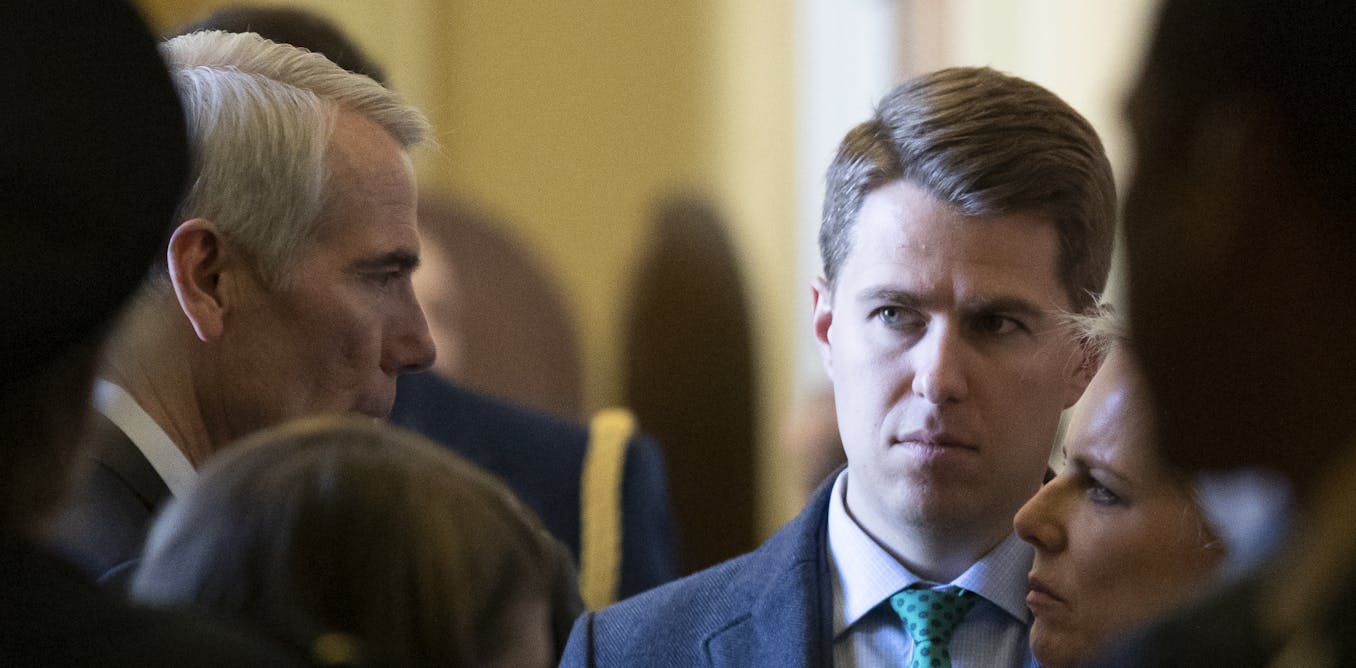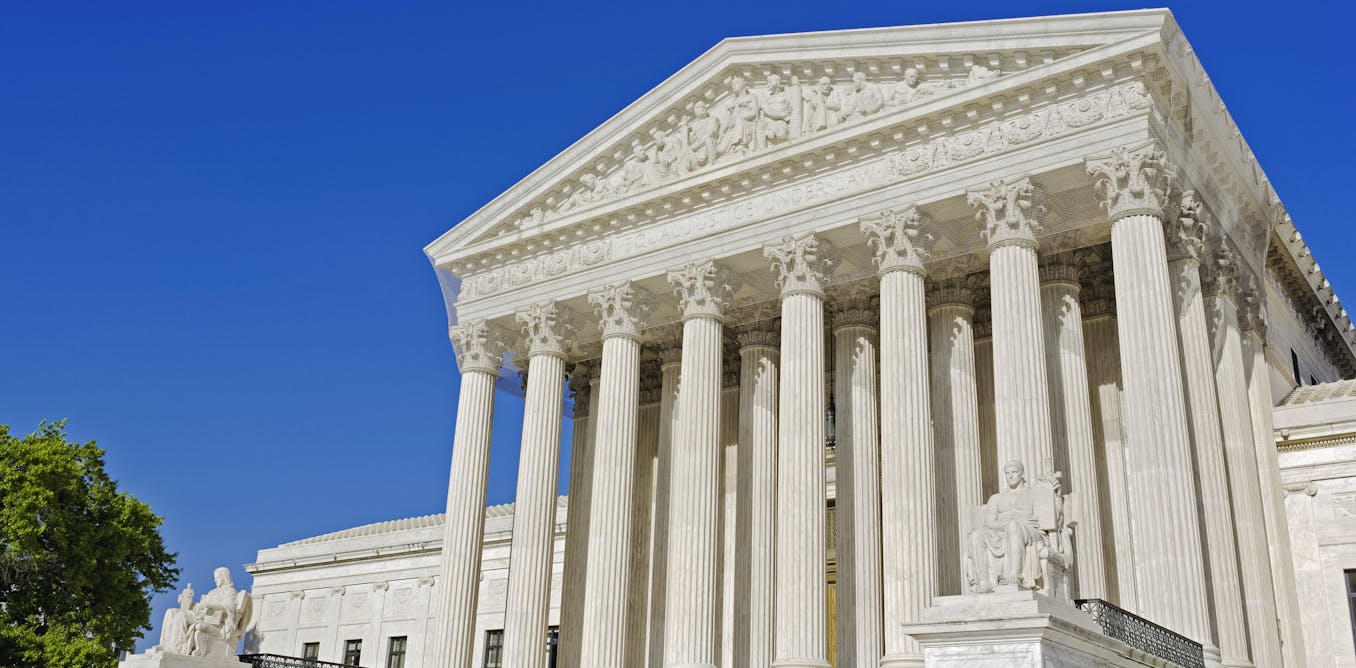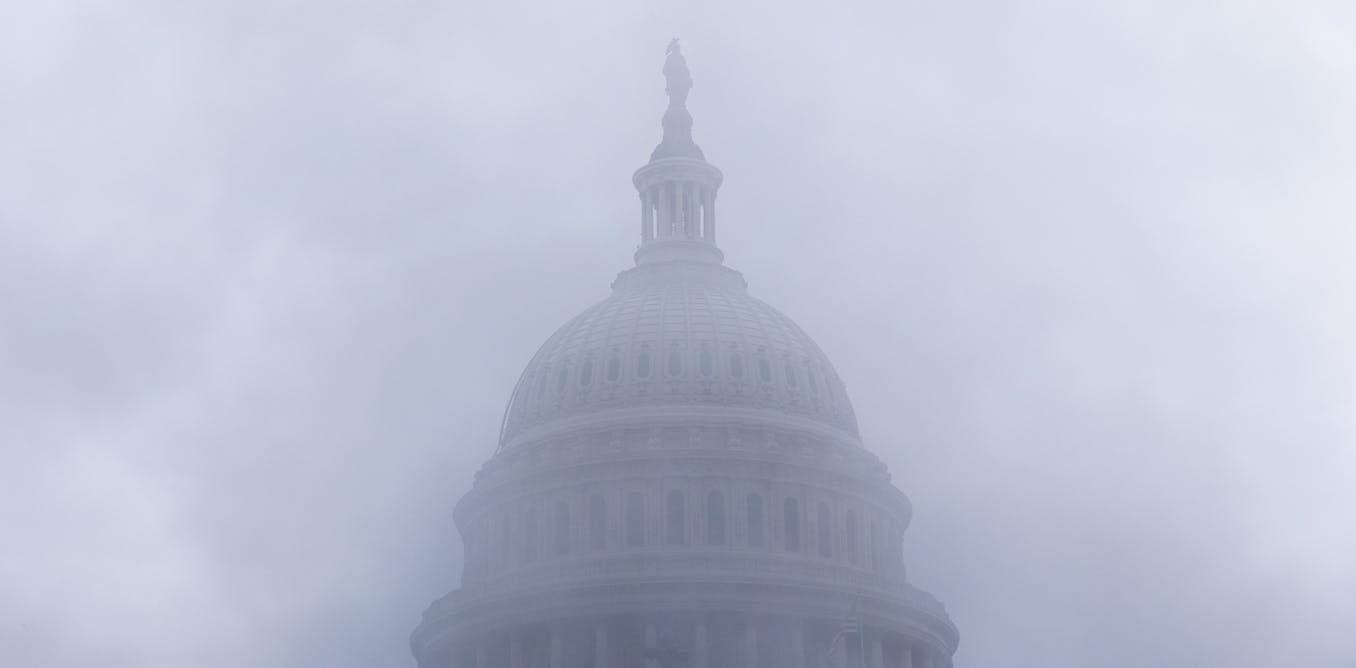There’s a reason Donald Trump’s 2024 presidential campaign is working hard to evoke nostalgia: People who are nostalgic – meaning, people who long for America’s “good old days” – were more likely to vote for Republican candidates in the 2022 midterm elections, according to research I conducted along with collaborators Kirby Goidel and Paul Kellstedt.
The first day of the 2024 Republican National Convention kicked off with a nostalgic message from Virginia Gov. Glenn Youngkin imploring voters to back Trump and “make America the land of opportunity again.”
And in general, the 2024 RNC themes largely wax nostalgic with “Make America Wealthy Once Again” on Monday, “Make America Safe Once Again” on Tuesday, “Make America Strong Once Again” on Wednesday, and “Make America Great Once Again” on Thursday.
The American public leans nostalgic. Through the 2022 Cooperative Election Study survey, which is a collective effort across many researchers and research groups, we surveyed 1,000 U.S. adults and found that approximately 54% of the respondents to our questions agree that “the world used to be a better place.” Other questions we asked included “How often do you long for the good old days in this country?” and “Do you think the American culture and way of life has mostly changed for the worse or better since the 1950s?”
From their answers, we constructed a scale of how much nostalgia a person feels for America’s past, and we used this scale to examine the influence of nostalgia on people’s vote choice in the 2022 midterm elections.
Our results show that the influence of nostalgia is most pronounced among independent voters.
In 2022, partisans, meaning people who aren’t independents, were loyal supporters of their respective parties, regardless of how much nostalgia they have. But independents, or people without party attachments, who feel relatively little nostalgia have a 57% probability of voting Democratic and 40% probability of voting Republican. Meanwhile, independents with relatively high levels of nostalgia have a 25% probability of voting Democratic and 74% probability of voting Republican.
Looking ahead to the 2024 general election, our findings indicate that nostalgic appeals could attract those more independent-minded swing voters to the Republican Party.
Trump’s nostalgic appeal
As a record number of Americans disapprove of incumbent President Joe Biden, a New York Times/Siena College poll finds that nostalgia for the late 2010s is setting in.
Trump’s role in the Jan. 6, 2021, insurrection and his handling of the pandemic seem like blips compared to the three years of sustained economic growth during his presidency from 2016 to 2019. Just 9% of voters say the insurrection or COVID-19 is the one thing they remember most from the Trump presidency – 24% recall the economy. It’s no surprise Trump’s presidential campaign is steeped in nostalgia, again.
Trump is using the same slogan that he used officially in his 2016 campaign and unofficially in his 2020 reelection bid – “make America great again.” In 2016 and 2020, the slogan referred to a vague and distant American past when things were better, simpler.
Now, the former president’s appeal has an element of specificity to it. “Make America great again” – captured in the acronym “MAGA” – is a pledge to return things both to “the good old days” and to the way they were during Trump’s presidency. Trump’s campaign is explicit about this connection. For example, the campaign website cites Trump’s first-term accomplishments when it lists “rebuild the greatest economy in history,” “stop crime and restore safety,” and “renew American strength and leadership” as some of Trump’s top priorities for another term.
Are you better off than you were four years ago?
Presidential candidates often use nostalgia in their campaigns. “Make America great again” was not novel in 2016: It was co-opted from Ronald Reagan’s “let’s make America great again” pitch in 1980.
Reagan was masterful in his use of nostalgic appeals. In 1980, he was running against an extremely unpopular incumbent president in Jimmy Carter. After four years of the Carter presidency, the American economy was significantly worse off than in 1976. The inflation rate was 13.5%, and the economy was in a recession.
While debating Carter, Reagan famously asked the audience, “Are you better off than you were four years ago?” The answer to Reagan’s question was clearly, “No.”
Comparing current conditions to the recent past is a crucial component of democratic accountability. The act of voting is inherently retrospective, a judgment of past performance. Voters need to be able to hold incumbent presidents accountable.
However, Trump’s nostalgia is more than simple retrospection. Trump’s appeal isn’t just about a better economic past or a more stable society. It serves as an evocation of a time in America when women and minorities had less power.
Nostalgia as a dog whistle
In a recently published paper in the journal Research & Politics, political scientists Kirby Goidel, Bradley Madsen and I find that feelings of nostalgia are strongly related to sexism and racism.
Analyses show that those people with more nostalgia are 23% more likely than those with less nostalgia to agree with the following racist statement: “Irish, Italian, Jewish and many other minorities overcame prejudice and worked their way up. Blacks should do the same without any special favors.”
Similarly, nostalgic respondents are significantly more likely to believe that women “are too easily offended” and that they “seek to gain power by getting control over men.”
The connection of nostalgia to racial resentment and hostile sexism is why Trump’s nostalgic appeal is so potent and polarizing: Nostalgia is not merely about the past four years or even the Reagan-era 1980s; it harks back to an era before the Civil Rights Movement, and before the feminist movement gained momentum.




